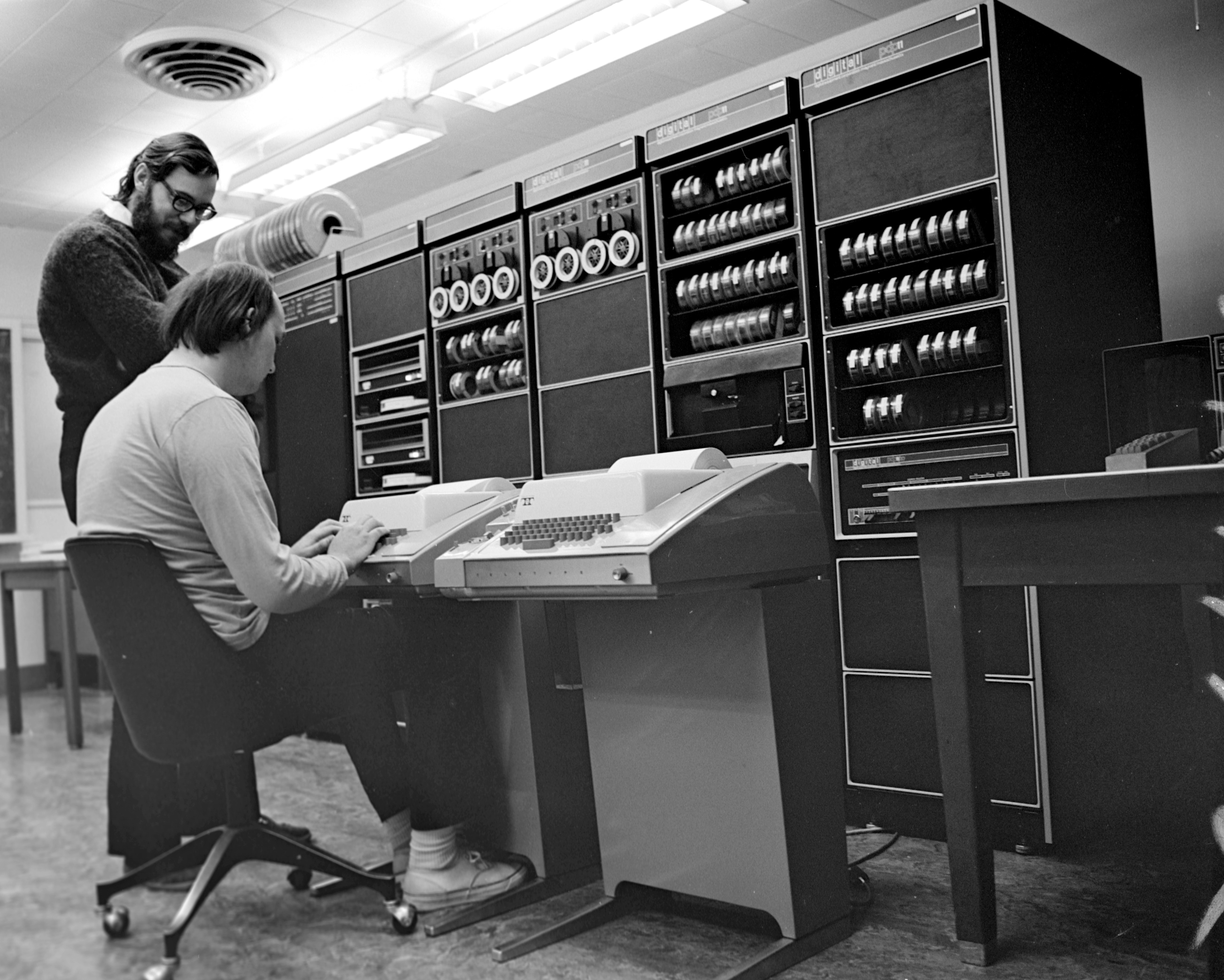Introduction
Brief: a short description of the significance and extent of UNIX
UNIX (or Unix) is a system that was built in the 1960s in response to the ever extant need for a reliable Operating System. Problems of the day included timesharing. State-of-the-art computers often completely filled up rooms. They were expensive to build and perhaps even more expensive to maintain.
UNIX was created initially by Ken Thompson, and further developed by Dennis Ritchie and other people at AT&T's Computing Science Research Center of Bell Labs in New Jersey. Early on, they got to work on solving all kinds of general purpose compute problems. By now, many other people have contributed to the development of UNIX and Unix-like operating systems, and UNIX has spread all over the world and beyond.
A UNIX-style system can solve a problem not only on single-purpose device, but on networked groups of machines as well. UNIX facilitates the clustering of resources through many apis and utilities. Using the UNIX system, one can develop very sophisticated software that remains robust, fast, secure and portable. Remote access and distributed computing were further developed in the Plan 9 system. Plan 9 development continues into 2021, and many of its ideas have already been taken back into UNIX-like derivatives.
Get started
There are multiple ways to navigate this document:
- Use the menu to select a topic
- Keyboard: use left and right arrow keys
- PC/Mobile: use edge panels labeled
<and>
